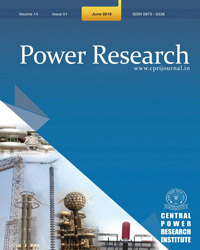Optimization of Solar Photovoltaic Converters for Maximum Energy Efficiency
Subscribe/Renew Journal
Performance of a SPV system is dependent on temperature, array configuration, solar insolation, shading across it etc. The conversion of solar energy using SPV modules comes with its own problems that arise from the change in insulation conditions. These changes in insulation conditions severely affect the efficiency and output power of the SPV modules. For improving the efficiency of conversion of solar energy can be done by tracking the maximum power point of a PV module. There are so many types of MPPT charge controllers for doing this important work in SPV system. A dc-dc converter is essential in SPV system as it acts as an interface between the load and the SPV module. Three different basic types of converters are explained in this paper without any non-idealities. There are other types of dc-dc converters as well, but these converters from these three basic converters. Further by using these dc-dc converters the performance of the MPPT algorithms can be done for improving the overall efficiency of the SPV system.
Keywords
Maximum power point tracking (MPPT), Solar photovoltaic (SPV) characteristics, DC to DC converter
User
Subscription
Login to verify subscription
Font Size
Information

Abstract Views: 249

PDF Views: 0



